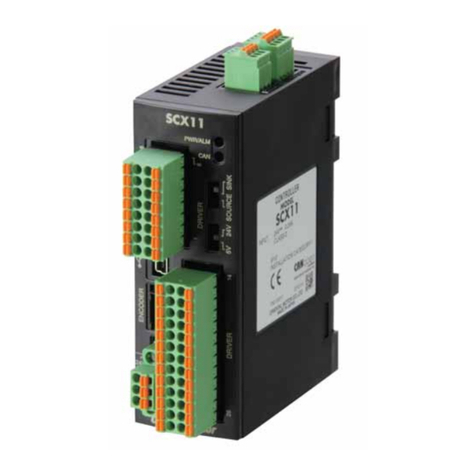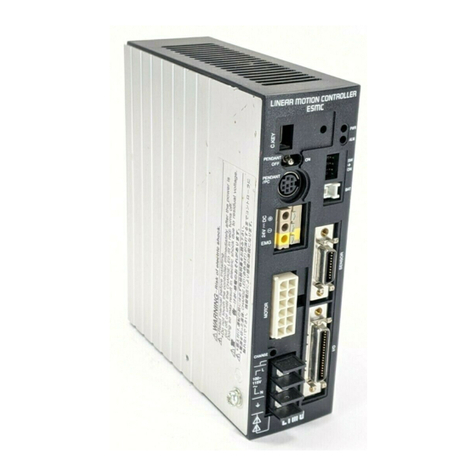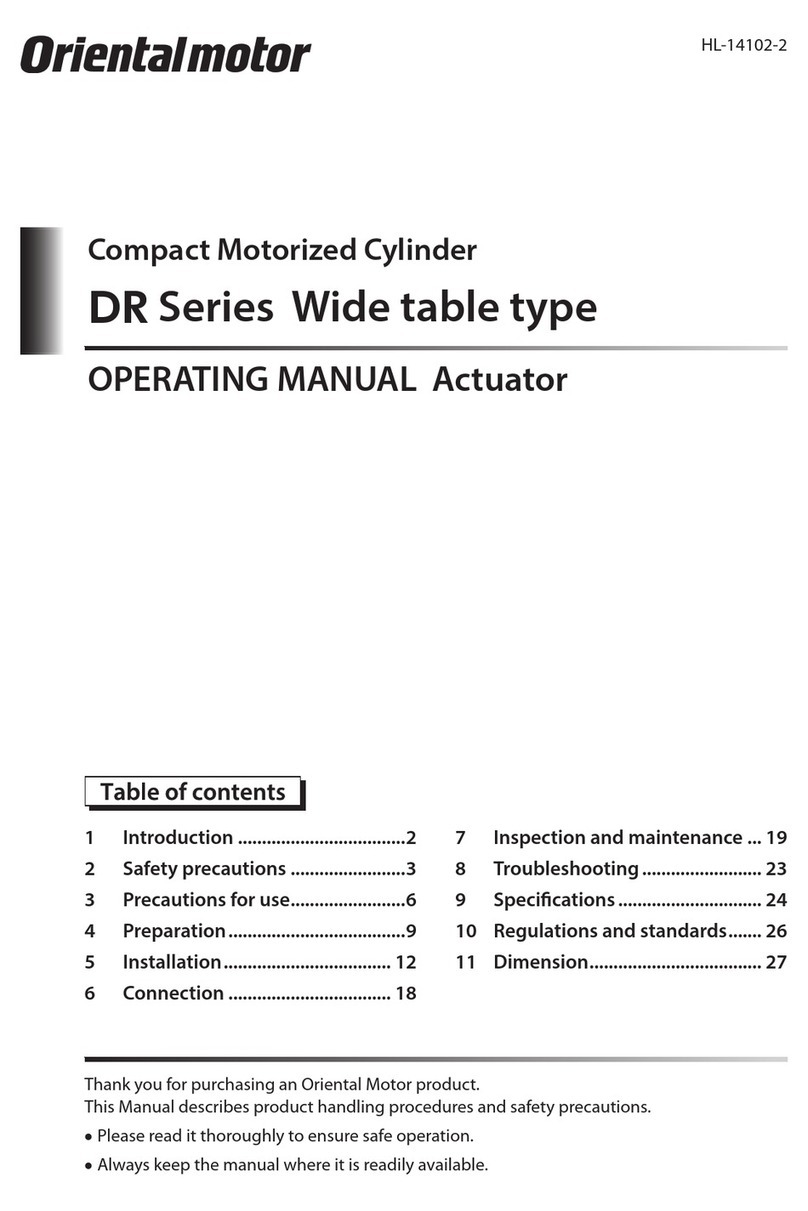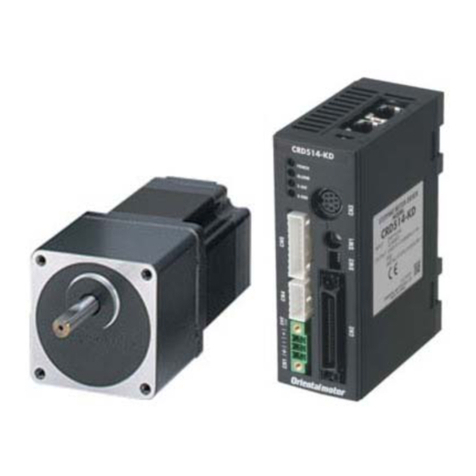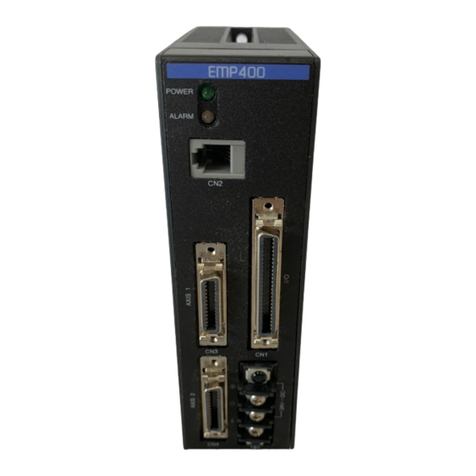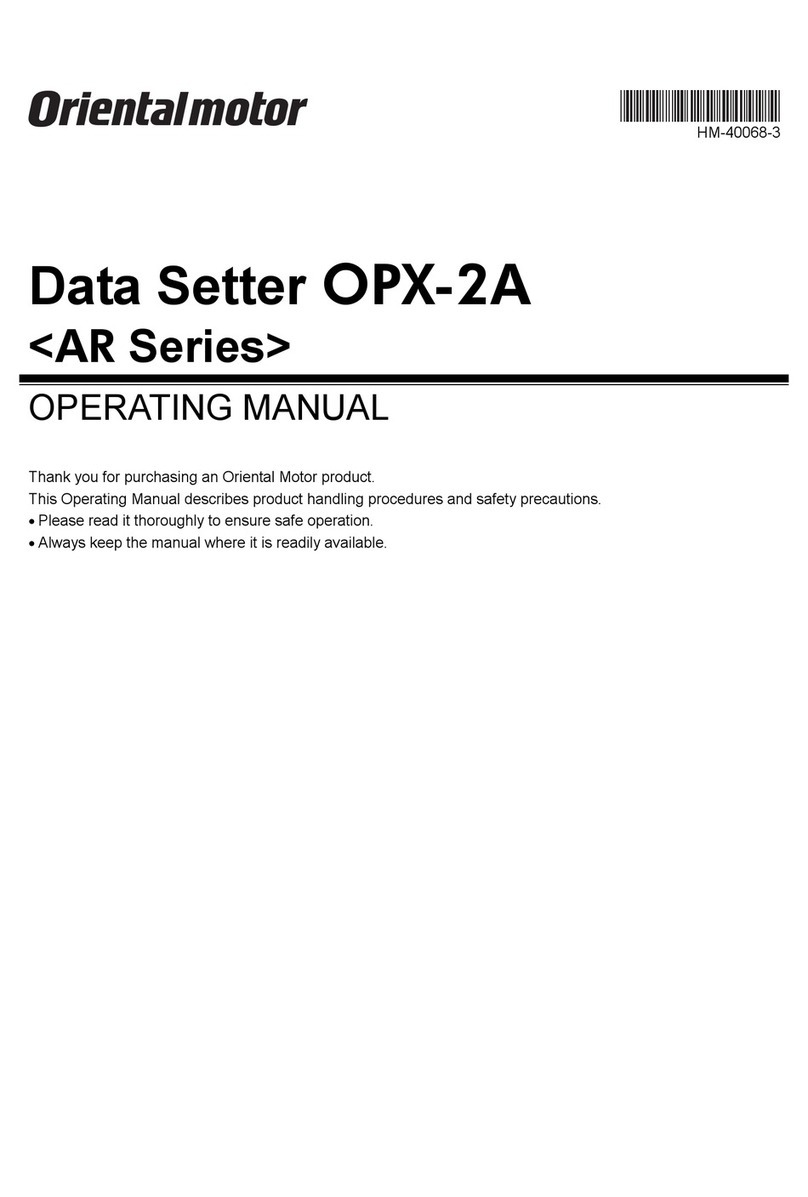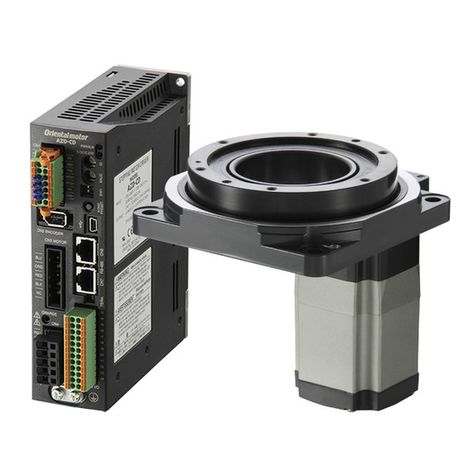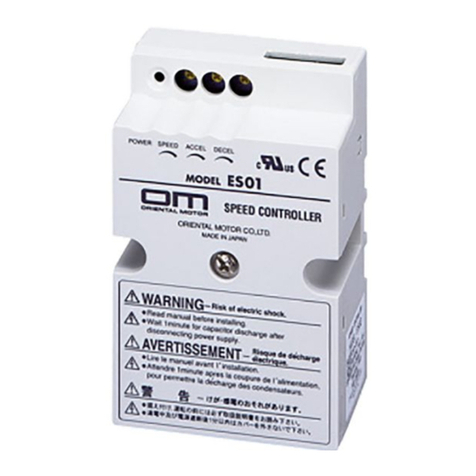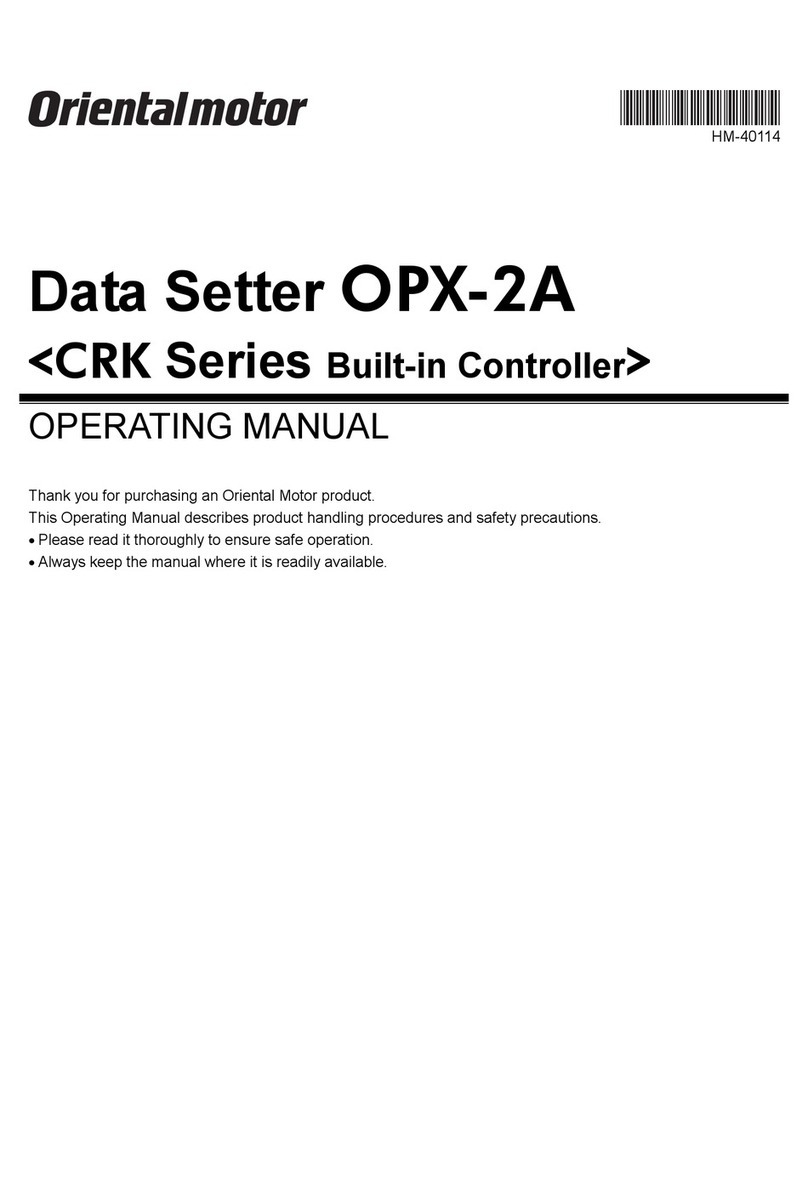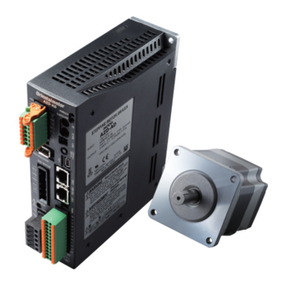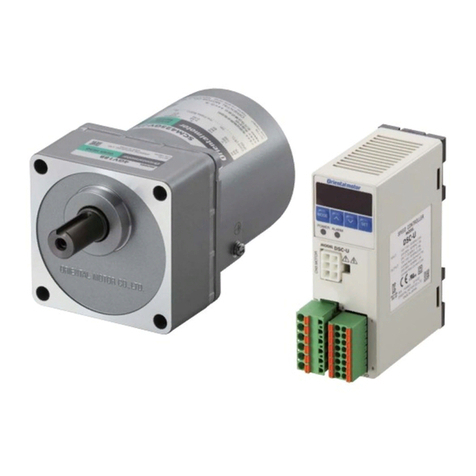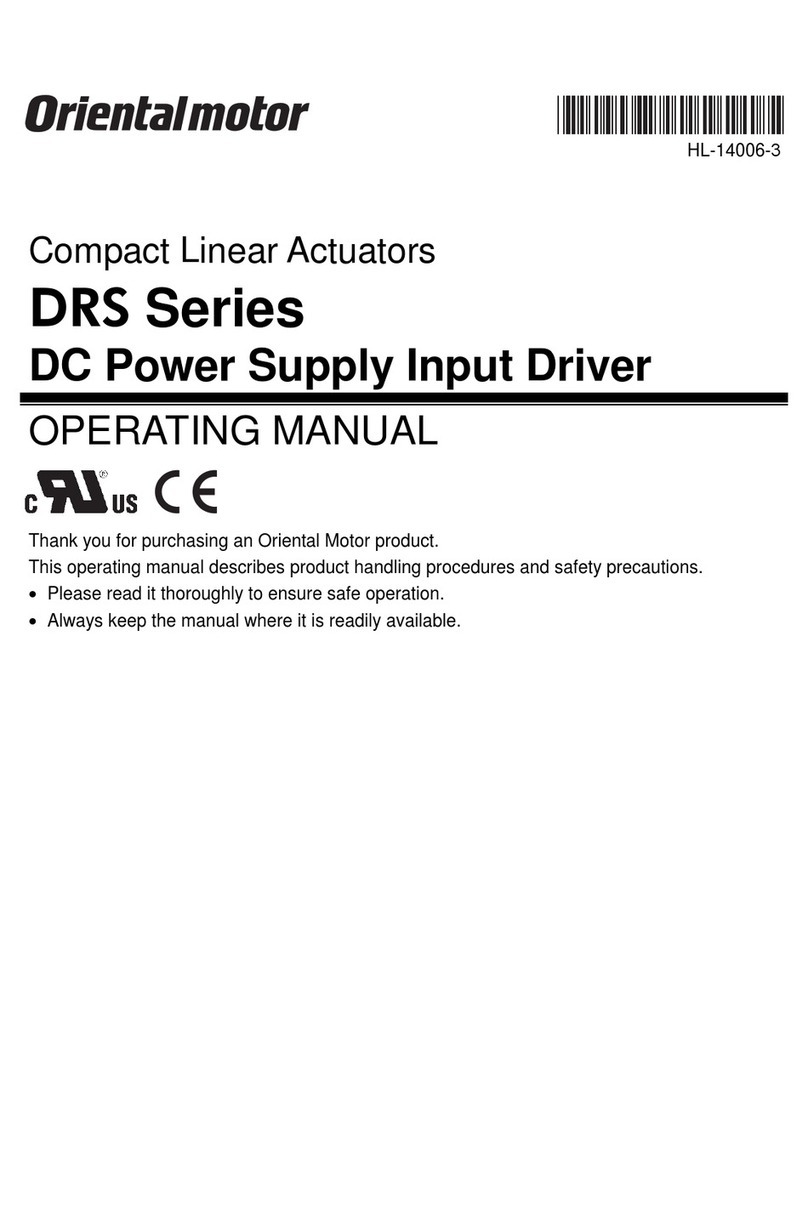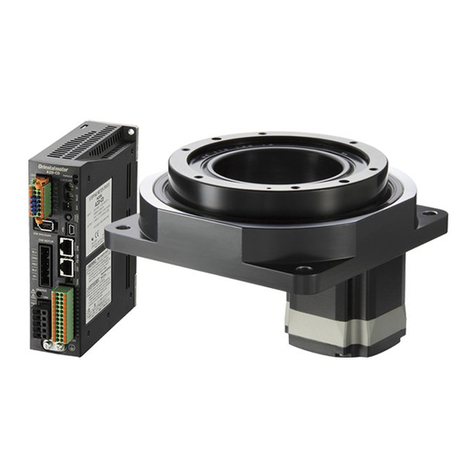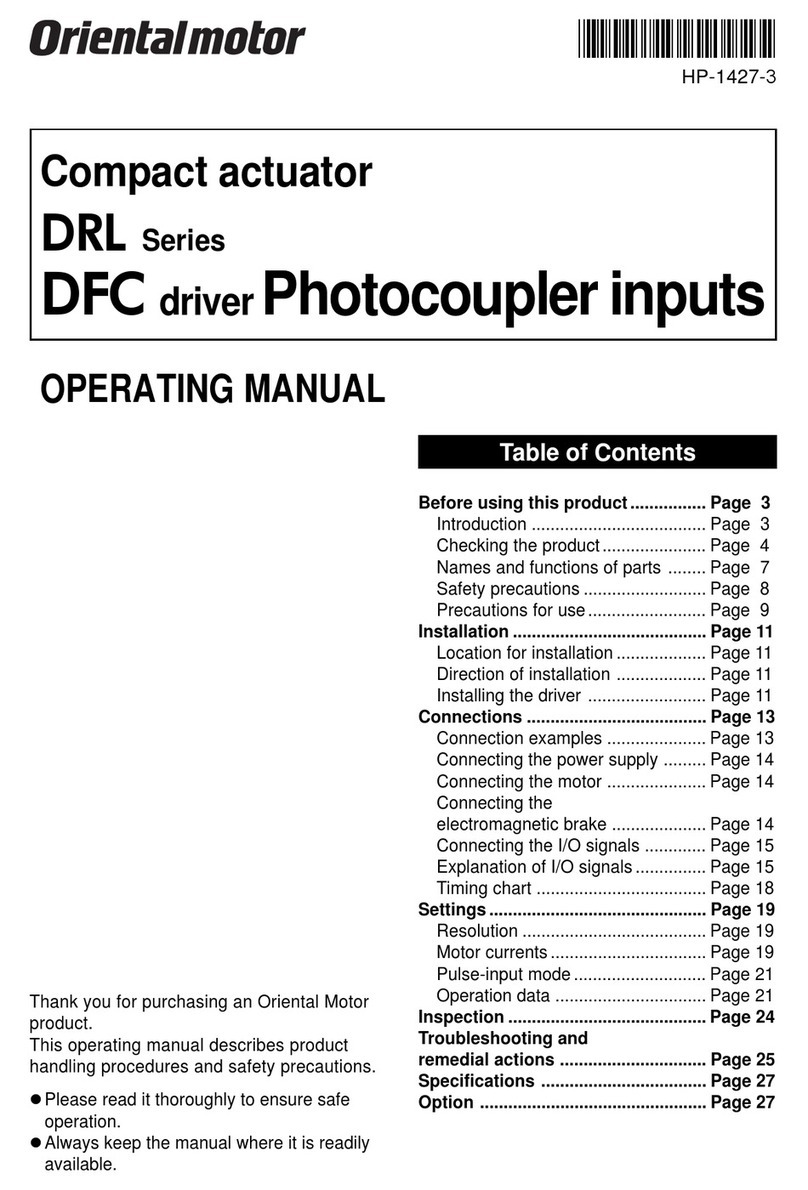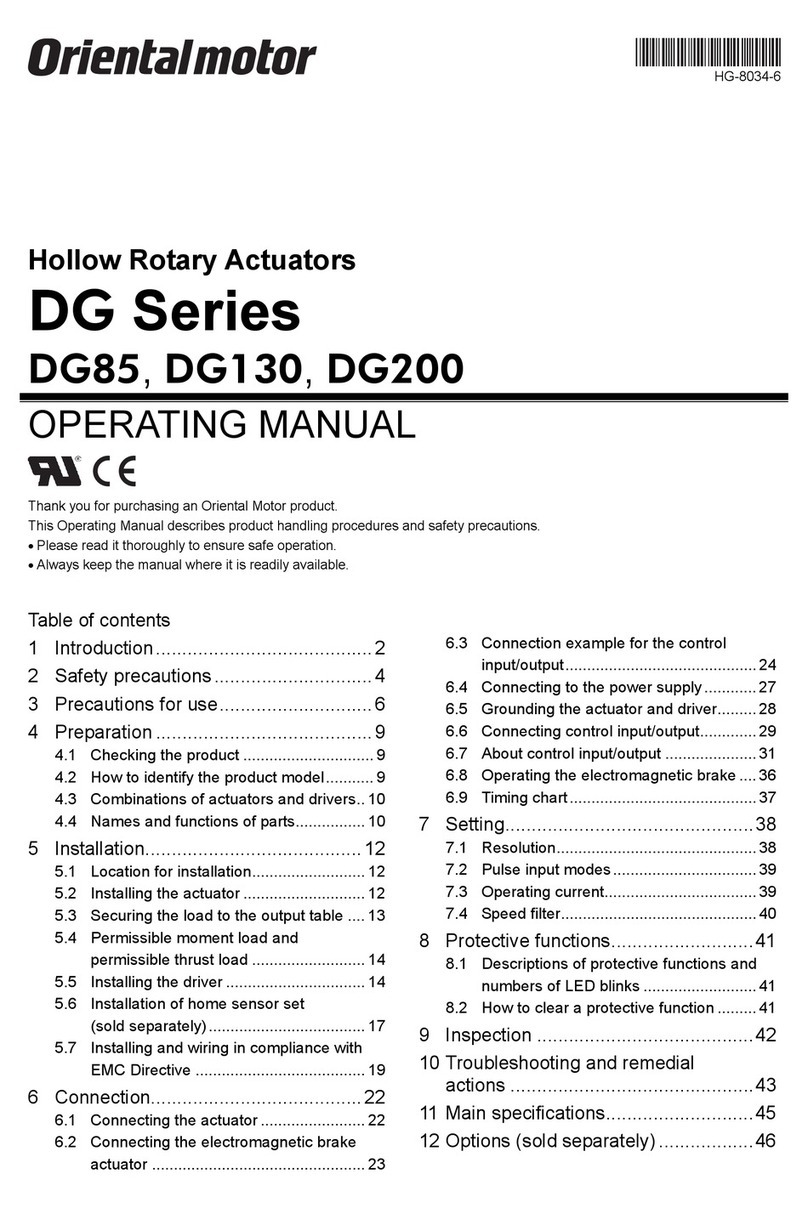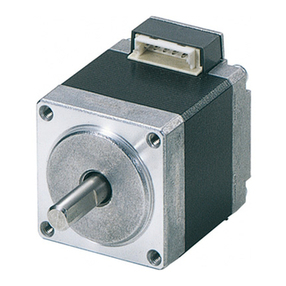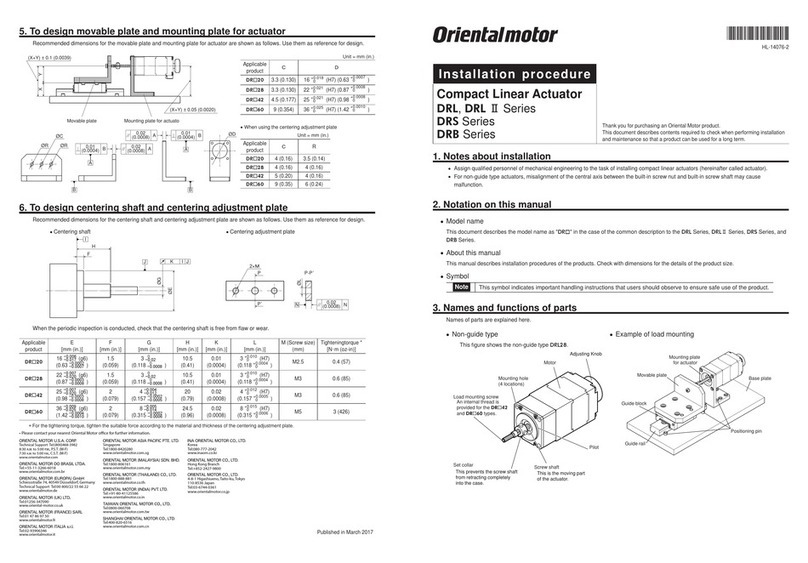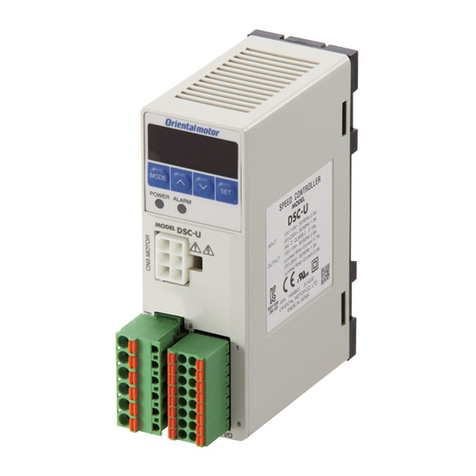
3 Precautions for use
−8−
3 Precautions for use
This section covers limitations and requirements the user should consider when using the product.
• Use the supplied cable to connect the motor and driver.
Always use the supplied cable to connect the motor and driver.
If a flexible cable or cable of 3 m (9.8 ft.) or longer is to be used, the appropriate cable must be purchased separately.
See p.69 for details.
• Conduct the insulation resistance measurement or withstand voltage test separately on the
motor and the driver.
Conducting the insulation resistance measurement or withstand voltage test with the motor and driver connected may
result in injury or damage to equipment.
• Do not apply an radial load and axial load in excess of the specified permissible limit.
Be sure to operate the motor within the specified permissible limit of radial load and axial load. Operating it under an
excessive radial load and axial load may damage the motor bearings (ball bearings). See p.17 for details.
• Operate the motor with a surface temperature not exceeding 100 °C (212 °F).
The driver has an overheat-protection function, but the motor has no such feature. The motor case’s surface
temperature may exceed 100 °C (212 °F) under certain conditions (ambient temperature, operating speed, duty cycle,
etc.). Keeping the surface temperature of the motor casing below 100 °C (212 °F) will also maximize the life of the
motor bearings (ball bearings).
Use the geared type motor in a condition where the gear case temperature does not exceed 70 °C (158 °F), in order to
prevent deterioration of grease in the gear.
• Maximum static torque at excitation
Maximum static torque at excitation represents a value obtained when the motor is excited using a rated current.
When combined with a dedicated driver and while the motor is stopped motor-temperature increases are suppressed
due to a current-reduction of approximately 50% by the current-cutback function. Acceleration and operation at the
maximum static torque at excitation is possible in start-up, but it has approximately 50% holding power after it has
stopped. When selecting a motor for your application, consider the fact that the holding power will be reduced to
approximately 50% after the motor has stopped.
• Use an electromagnetic brake type for a vertical applications.
• When the motor is used in a vertical applications, use an electromagnetic brake type to hold the load in position. To
hold the load in position, apply the electromagnetic brake only after the motor has stopped.
• Do not use the electromagnetic brake to bring the moving motor to a halt. Repeated braking for such a purpose will
wear the brake hub excessively, causing its holding ability to drop.
• Since the electromagnetic brake is of the non-excitation type, it can also be used to hold the load in position upon
the occurrence of a power failure. However, this is not a secure means of holding the load. Do not use the
electromagnetic brake as a safety brake.
• When the driver’s protective function is triggered, the motor stops as the current is turned off. The user must set a
controller sequence that will cut off the power to the electromagnetic brake and hold the load in position upon
detecting an “OFF” ALARM output.
• Connecting an electromagnetic brake motor
When using an electromagnetic brake motor, provide separate power supplies for the I/O signals and the
electromagnetic brake.
• Install the driver in a vertical orientation.
The driver’s heat-dissipation function is designed according to vertical orientation. Installing the driver in any other
orientation may shorten the life of electronic parts due to temperature increases within the driver.
• Preventing leakage current
Stray capacitance exists between the driver’s current-carrying line and other current-carrying lines, the earth and the
motor, respectively. A high-frequency current may leak out through such capacitance, having a detrimental effect on
the surrounding equipment. The actual leakage current value depends on the driver’s switching frequency, the length
of wiring between the driver and motor, and so on.
When installing a leakage current breaker, use the following products, for example, which have high-frequency signal
protection:
Mitsubishi Electric Corporation: NV series
Fuji Electric FA Components & Systems Co., Ltd.: EG and SG series

